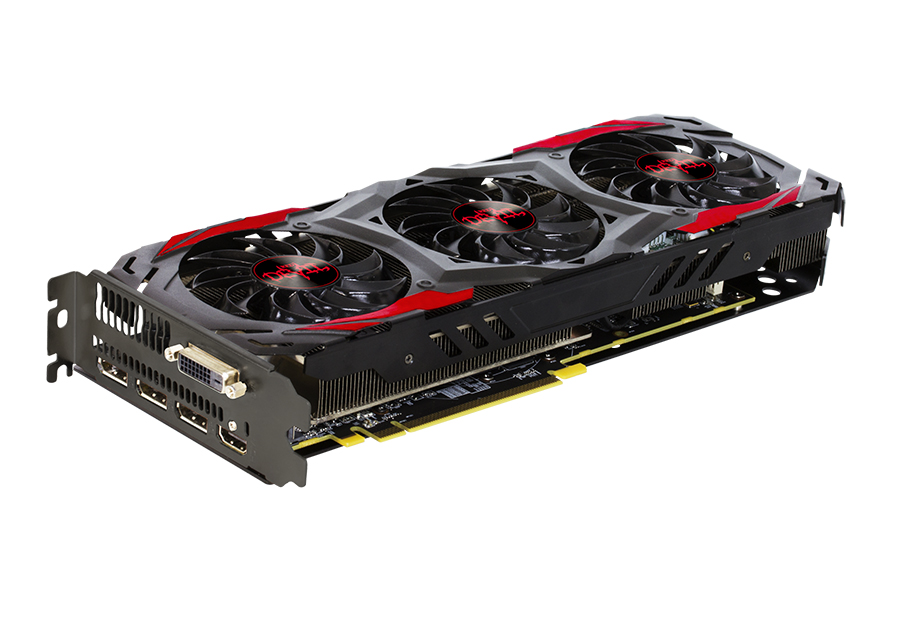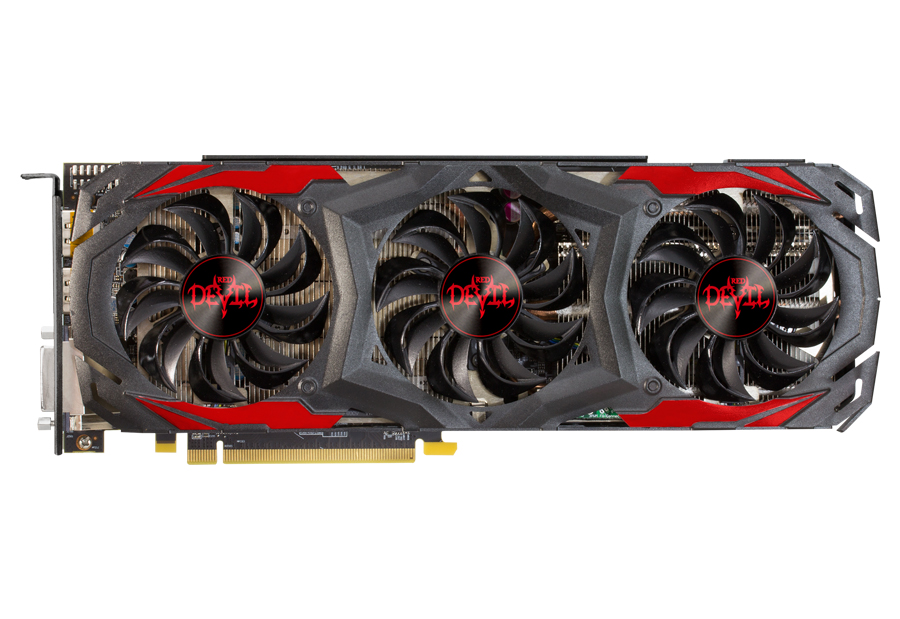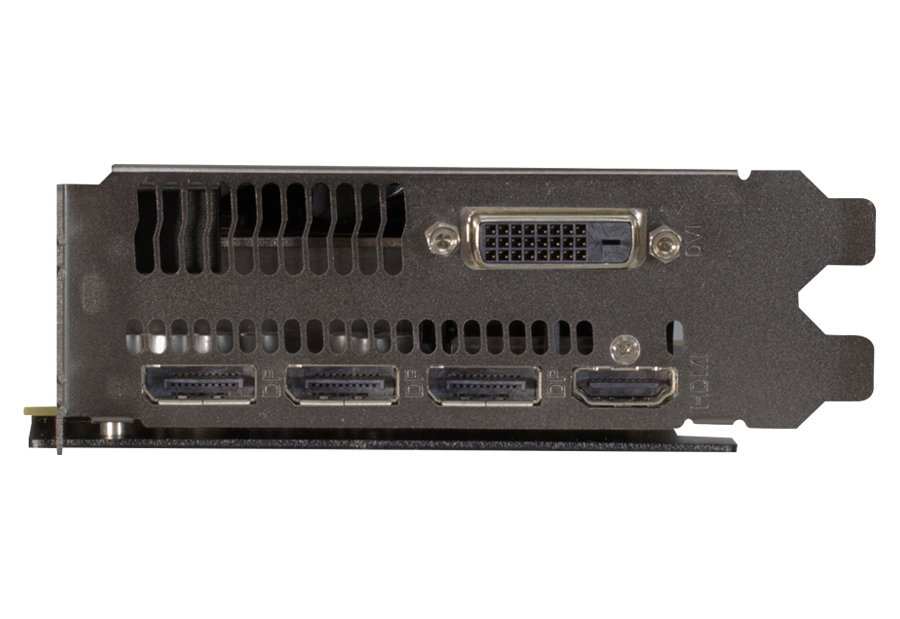Powercolor Unveils Custom Cooled Red Devil RX 480 GPU
Custom cooled AMD Radeon RX 480 GPUs are on their way, and Powercolor is leading the charge with its Radeon Red Devil RX 480.
Instead of the blower-style air cooler used on AMD’s reference Radeon RX 480, Powercolor uses its in-house designed Double Blade III thermal solution. The Double Blade III heatsink contains two 8 mm and two 6 mm nickel-plated heat pipes that make contact with a copper baseplate. There is also a metal backplate to help cool the rear of the card. The thermal solution utilizes three 80 mm double-ball bearing fans to keep the assembly cool. The cooler is 55 mm longer than the reference cooler.
The Radeon RX 480 GPU die contains a total of 2304 stream processors based on AMD’s GCN 4 architecture. AMD crafted the core with 14 nm FinFET transistors from GlobalFoundries, and according to the reference design, it should operate at a max clock speed of 1266 MHz. The reference design also calls for 8 GB of GDDR5 clocked at 8 GHz.
The reference design also faced a serious power issue, as AMD equipped it with just a single 6-pin PCIe power connector. The power arrangement forced the GPU to pull more power from the motherboard PCIe slot than we are accustomed to, and it potentially limited the RX 480's overclock capabilities.
Powercolor opted to go with a single 8-pin PCIe power connector on its GPU instead, which should provide plenty of extra current for overclocking the graphics card. Although this doesn’t guarantee that the card will be able to operate above its factory settings, it at least shouldn’t be handicapped by an inadequate power supply.
One issue that may arise when overclocking the Powercolor Radeon Red Devil RX 480 is the 6+1 phase power system. AMD’s reference design also used a 6+1 phase power design, and according to our tests of the GPU, these power phases aren't exactly cool, which could potentially limit overclocking results. It is also possible that Powercolor used higher-quality power regulation hardware and a superior thermal solution to overcome any potential heat issues.
The GPU features a BIOS switch to make it easier for users to recover from a failed GPU overclock. The card also features two different overclocking modes; an ultra-overclocking mode and a silent overclocking mode. The BIOS switch changes the card between these two modes and likely alters several other settings, such as power consumption.
Get Tom's Hardware's best news and in-depth reviews, straight to your inbox.
The Radeon Red Devil RX 480 will come with a slight factory overclock to the GPU core, pushing it up from the reference designs 1266 MHz to 1330 MHz. The GDDR5, which AMD already pushed to the limits of what GDDR5 is technically capable of, is still at the reference 8 GHz.
There is currently no word on pricing or availability.
| Powercolor Radeon Red Devil RX 480 Comparison | ||
|---|---|---|
| Model | Red Devil RX 480 | AMD Reference RX 480 |
| Stream Processors | 2304 | 2304 |
| Video Memory | 8 GB GDDR5 | 4 or 8 GB GDDR5 |
| Memory Clock Speed | 8 GHz | 8 GHz |
| Memory Interface | 256-bit | 256-bit |
| Core Clock | Up To 1330 MHz (Boost) | Up To 1266 MHz (Boost) |
| Display Ports | DVI-DHDMI3 x DisplayPort | HDMI3 x DisplayPort |
| PCI-E Power Connector | 8-pin | 6-pin |
EDIT: July 21, 2016, corrected DVI typo in chart.
-
clonazepam Reference RX480 didn't include DVI-D connector. You have it listed in the final graphic as having one.Reply -
kyle382 Red Devil...really? This is the cheesiest/laziest attempt I have seen to market a card as hardcore.Reply -
alextheblue ReplyIt is also possible that Powercolor used higher-quality power regulation hardware and a superior thermal solution to overcome any potential heat issues.
*Looks at massive cooling solution*
No, they couldn't POSSIBLY have thought to keep HEAT in check!
All joking aside, I'm generally more interested in cards from Asus, XFX and Sapphire. -
IInuyasha74 Reply18319032 said:It is also possible that Powercolor used higher-quality power regulation hardware and a superior thermal solution to overcome any potential heat issues.
*Looks at massive cooling solution*
No, they couldn't POSSIBLY have thought to keep HEAT in check!
All joking aside, I'm generally more interested in cards from Asus, XFX and Sapphire.
Lol well, until I have tested it to know for sure or can show test results, I can't put it in writing that this cooler will be superior. It should be though.



